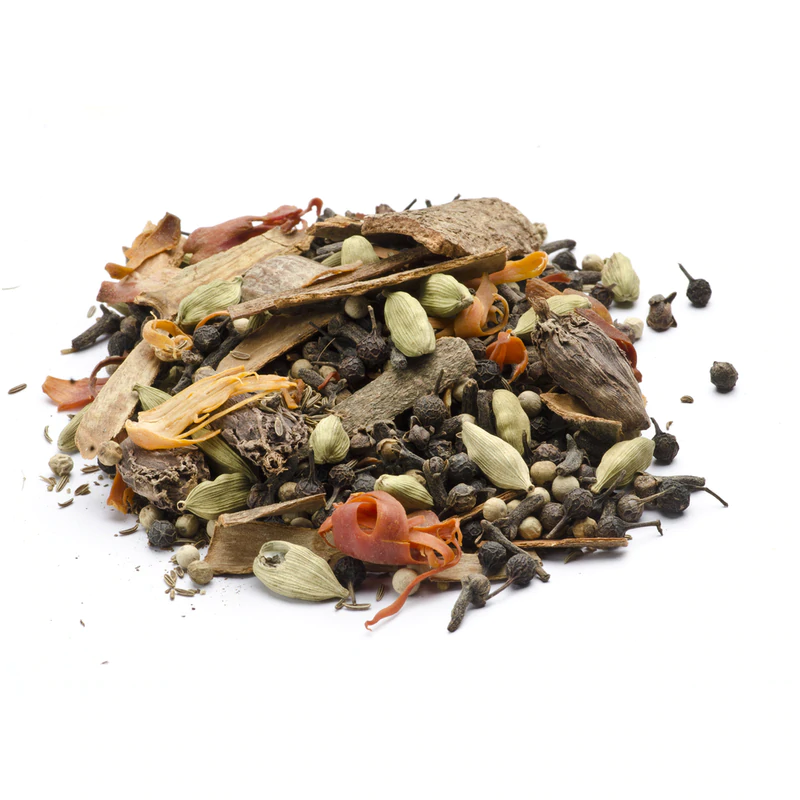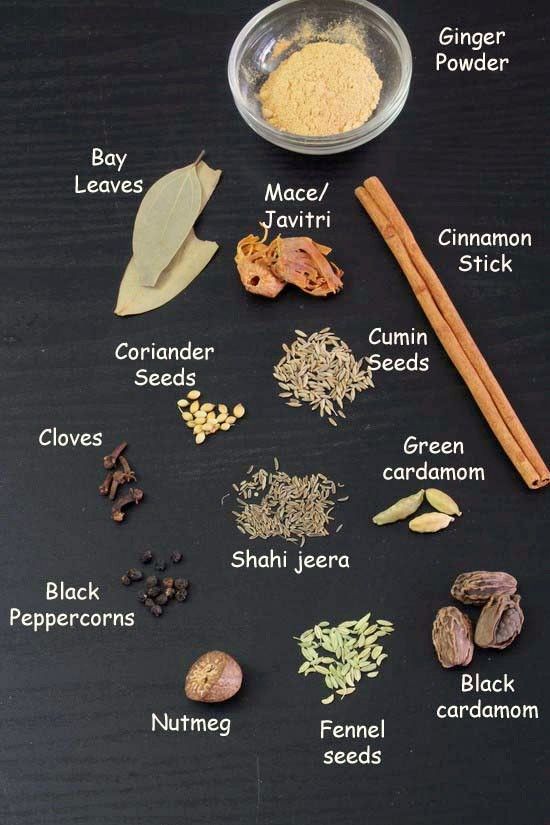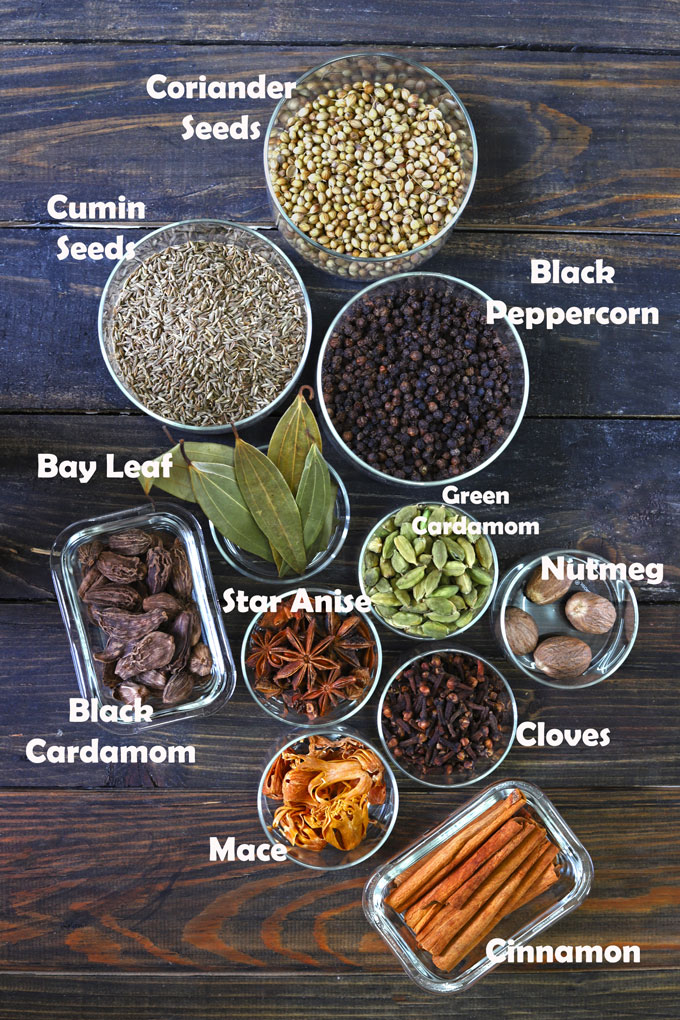
Garam Masala, an age old unique Indian spice mix
The term Garam Masala is commonly heard all over in India. It is a classic spice mix that rule in almost every Indian kitchen. The sole purpose of using garam masala in Indian dishes (both veg and non-veg) is to enhance the flavour.
This Indian spice mix not only enhances the flavour of a dish but also adds to the list when it comes to health benefits. Almost all whole spices of garam masala have their own nutritional value.

The use of spice mix is not recent; rather it has been dominant in Indian Kitchen for ages. The homemade recipe has been passed down from generation to generation.
At present, garam masala powder brands are easily available in Indian market. No doubt it makes life easy and saves a lot of time. But it can never match the fresh flavour of homemade grinned garam masala.

Its popularity is not limited to Indian sub-continent but has successfully spread across the globe. It is now available in the international market as well.
What is Garam Masala?

Garam Masala is a unique blend of Indian whole spices. Both ‘Garam’ and ‘Masala’ are Hindi terms meaning ‘Hot’ or ‘Warm’ and ‘Spice’ respectively.
It brings warming effect in the dish and as well enhances the taste. Indian whole spices are dry roasted in a tawa and ground into powder form.
History of Garam Masala:
History of Indian whole spices is almost 4000 years old. Our Indian traditional medicine, called ‘Ayurveda’ mentions these spices and their health benefits.
Garam masala is said to have its origin in Northern part of India. North India experience severe cold in winter. This spice mix contains heating agents which tends to keep the human body warm and comfortable during winter.
When Mughals entered India, this spice mix found its place in Mughlai cuisine. Eventually it spread all over India.
As per the availability of the whole spices, the blend may differ from region to region.
Different Indian Whole Spices:
India counts for 75% of total spice around the globe. India is not only the largest producer but also the largest exporter of the whole spices. India shares 48% of the spice trade.
The state of Rajasthan records 10% of India’s total whole spice produce followed by Gujarat, Andhra Pradesh, Telengana, Karnataka, West Bengal, Odisha, Uttar Pradesh, Maharashtra, Tamil Nadu.


India permits the growth of variety of spices due to its tropical climate.
Following are the names of different Indian whole spices:
- Turmeric (Haldi)
- Cumin seeds (sabut Jeera)
- Green Cardamon (Choti Elaichi)
- Coriander seeds (sabut Dhaniya)
- Black Cardamon (Kali Elaichi)
- Ginger (Adrek)
- Garlic (Lahsun)
- Asafoetida (Hing)
- Fenugreek seeds (Meethi dana)
- Bay Leaves (Tej Patta)
- Cinnamon/Cassia Bark (Dalchini)
- Fennel seeds (Saunf)
- Star Anise (Chakra Phul)
- Carom seed (Ajwain)
- Nutmeg (Jaiphal)
- Mace (Javitri)
- Clove (Laung)
- Yellow Mustard seeds (Sarso)
- Black Mustard seeds (Rai)
- Dried Indian Red chilli (Sukha Lal Mirch)
- Curry Leaves (Curry patta)
- Dried Fenugreek Leaves (Kasuri Meethi)
- Dried Ginger powder (Saunth)
- Saffron (Kesar)
- Onion seeds or Nigella seeds (Kalonji or Mangrel)
- Poppy seed (Posta dana)
- Caraway seeds (Shahijeera)
- Sesame seed (Til)
- Tamarind (Imli)
Different Blends of Garam Masala:
As mentioned before, every Indian state has their own version of garam masala recipe. The blend varies from region to region due to the availability of whole spices.
Though the blend difference is minute (just a change of few spices) but the purpose remains the same.
Following are few different Indian blends:
-
Punjabi Blend:
Cumin seeds + Coriander seeds + Green Cardamon + Black Peppercorns + Fennel seeds + Cloves + Cinnamon + Bay Leaf + Caraway seeds + Nutmeg + Dried Ginger Powder.
-
Bengali Blend (or Shahi Garam Masala):
Green Cardamon + Cinnamon + Cloves + Nutmeg + Mace + Black Cardamon + Black Peppercorn + Bay Leaf + Dried Red Chilli.
-
Kerala Blend:
Fennel seeds + Cumin seed + Coriander seed + Black Peppercorns + Cinnamon + Bay Leaf + Green Cardamon + Black Cardamon + Cloves + Star Anise + Mace + Sea salt (for taste).
-
Marathi Blend:
Coriander seeds + Cumin seeds + Caraway Seeds + Fennel seeds + Cinnamon + Black Peppercorns + Star Anise + Triphal + Black Stone Flower + Mace + Black Cardamon + Green Cardamon + Bay Leaf + Kashmiri Red Chilli.
-
Rajasthani Blend :
Dried Red Chillies + Black Cardamon + Cumin seeds + Coriander seeds + Carom seeds.
-
Assamese Blend:
Cloves + Green Cardamon + Cinnamon + Bay leaf + Cumin seeds + Coriander seed + Black Peppercorns + Dry Chillis.
-
Kashmiri Blend:
Cumin seeds + Green Cardamon + Cloves + Coriander seeds + Black Peppercorns + Fennel seeds + Bay Leaf + Mace + Nutmeg.
Health Benefits of Garam Masala:
- It helps in digestion.
- It speeds up metabolism.
- It contains anti-oxidant properties.
- It fights bloating problem.
- It improves heart health.
- It regulates blood pressure.
- It regulates inflammation.
- It reduces risk of cancer.
- It enhances absorption of different nutrients.
- It defends against diabetes.
- It prevents neurological issues.
- It boasts immunity.
- It helps in relieving constipation.
Side Effects of Garam Masala:
Everything has its pros and cons. Even good things come with cons may be a few in number. Similarly, garam masala may have some side effects if consumed beyond limit.
The side effects may vary from:
- Acidity
- Piles
- Heartburn
- Stomach burn.
- Skin issues like pimple, black marks, etc.
- Can weaken intestine.
- Lose of appetite.
- Abdominal pain.
- Gastric problem.
- Feeling of heaviness.



